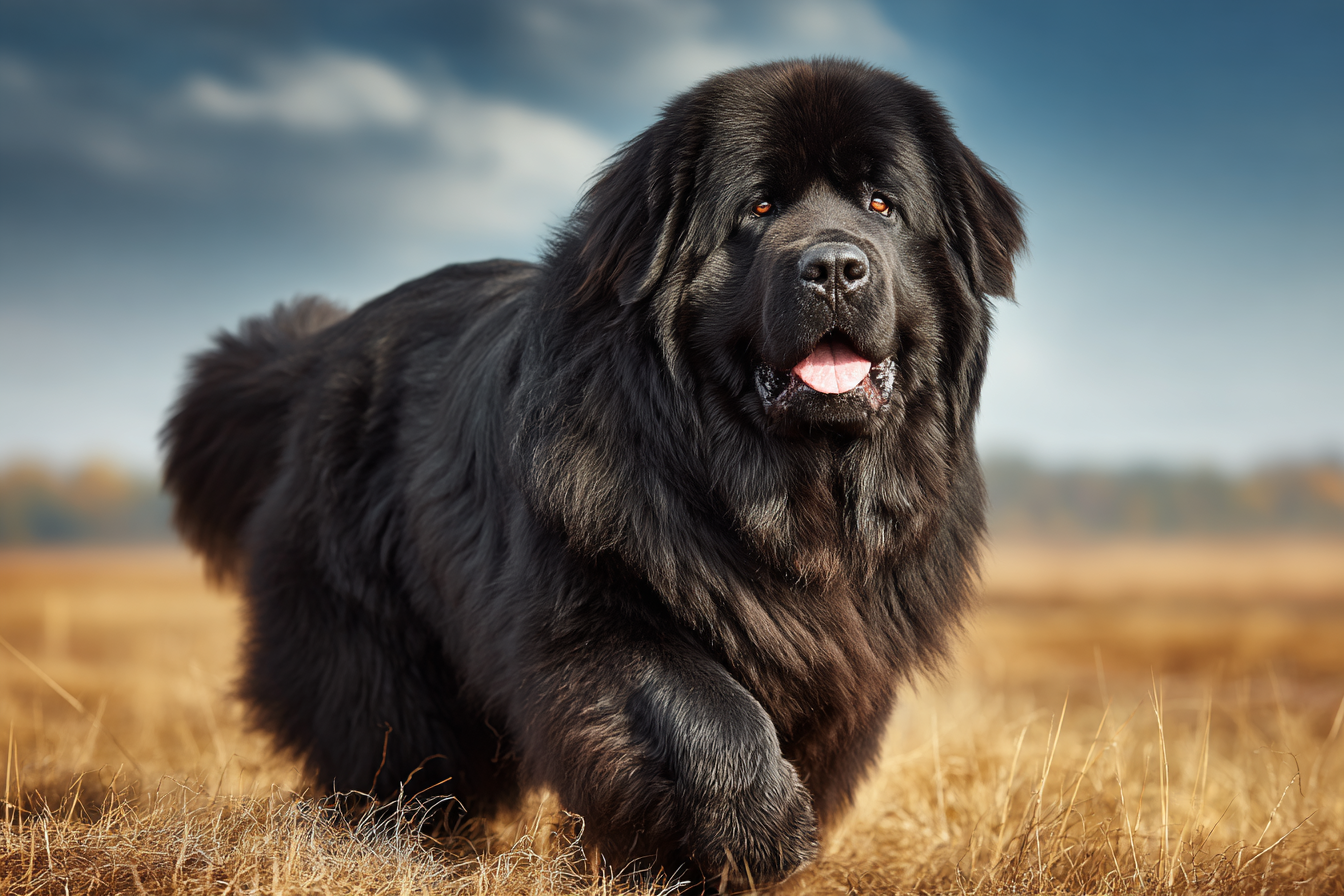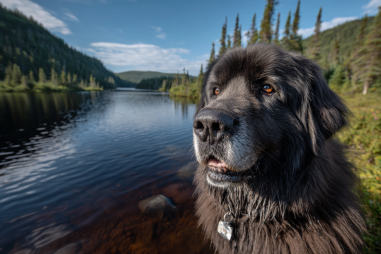Newfoundland dogs are known for their gentle nature, impressive size, and strong swimming abilities. As a breed that can weigh between 100 to 150 pounds or more, they require a particular approach to exercise that supports both their physical health and mental well-being. Meeting the exercise needs of your Newfoundland dog helps ensure they live a happy, balanced life free from common health pitfalls associated with large breeds. In this article, we’ll explore how to provide the right amount and type of activity for your Newfoundland throughout different stages of their life.
The Importance of Exercise for Large Breeds
Large breeds like the Newfoundland come with specific challenges and needs when it comes to exercise. Due to their size and predisposition to joint issues such as hip dysplasia and arthritis, moderate physical activity is crucial for maintaining healthy muscles and joints. Without sufficient exercise, these gentle giants can become overweight, which adds extra stress to their skeletal structure and can exacerbate joint problems. Regular activity also prevents boredom and destructive behaviors that can arise from insufficient mental and physical stimulation.
Exercise also promotes cardiovascular health and supports a healthy metabolism, making it a foundational aspect of your Newfoundland’s overall well-being. Since these dogs tend to have a calm demeanor, daily exercise helps keep them fit and excited rather than lethargic or anxious.
Recommended Daily Exercise Duration and Types
Newfoundlands generally require about 30 to 60 minutes of exercise per day, depending on their age, health, and energy level. Unlike smaller breeds that may have bursts of high energy, the Newfoundland benefits most from consistent, moderate exercise rather than intense sessions. It’s important to tailor the routine to your individual dog, observing how they respond to the activity.
The best exercise types for Newfoundland dogs typically include:
- Leisurely walks: Aim for multiple short walks totaling 30-60 minutes. This low-impact activity helps increase stamina without putting too much strain on developing or aging joints.
- Swimming: Swimming is an excellent exercise for Newfoundlands as it is easy on their joints and provides full-body conditioning. Their natural swimming ability makes this activity both enjoyable and highly beneficial.
- Gentle play: Activities like fetch in a controlled environment can encourage movement and fun without over-exertion.
Low-Impact Activities Suitable for Newfoundland
Considering the Newfoundland’s size and predisposition to joint issues, low-impact exercises are ideal. These activities reduce the risk of injury and help prolong your dog’s comfortable movement throughout life. Swimming remains one of the top low-impact exercises for Newfoundlands because it supports muscle tone while protecting joints from harsh impacts. If you don’t have access to a pool, gentle leash walks on soft terrain such as grass or dirt paths work well.
Other low-impact options include slow hikes over flat trails and light water retrieval games. It’s best to avoid highly strenuous activities like jumping onto hard surfaces or running on concrete, especially during your dog’s younger years when their joints are still developing.
Avoiding Over-Exertion and Joint Stress
One of the most common mistakes new Newfoundland owners make is pushing their dogs too hard in exercise routines. Due to their large size and slower growth rates, young Newfoundlands are particularly vulnerable to joint damage if over-exercised. Avoiding high-impact activities and intense, prolonged exercise sessions during their first year is vital.
Watch closely for signs of fatigue or discomfort, which can include limping, excessive panting, or reluctance to move. If you observe these indicators, stop the activity and allow your dog to rest. Over-exertion not only risks injuries but can also lead to long-term joint problems like arthritis.
To protect your Newfoundland’s joints, keep exercise sessions consistent but gentle, and never encourage excessive jumping or stair climbing early on.
Mental Stimulation and Play
Physical exercise is only one part of keeping your Newfoundland happy. Mental stimulation plays an equally important role, especially for such an intelligent and socially inclined breed. Boredom can lead to behavioral issues, so integrating playtime and brain exercises can enrich your dog’s day.
Interactive toys, puzzle feeders, obedience training, and scent work are all excellent ways to challenge a Newfoundland’s mind. Socialization with other dogs during calm play sessions can also provide mental enrichment. Even simple games like hide-and-seek or learning new commands add valuable stimulation without exhausting your pet physically.
Adapting Exercise as Your Dog Ages
Newfoundlands, like all dogs, experience changes in their exercise needs as they grow older. Puppies require gentle, short periods of play to prevent joint stress, while adolescent dogs may handle longer, more active sessions as their bodies strengthen. Once your Newfoundland reaches senior age, usually around 7 years and older, their exercise routine should be carefully adjusted to match reduced stamina and potential health concerns.
In older dogs, focus more on low-impact activities such as leisurely walks and swimming at a comfortable pace. Monitoring their weight is also important because added pounds can severely affect aging joints. Frequent check-ins with your veterinarian can help determine any recommended changes to your dog’s daily exercise plan and detect early signs of mobility issues.
Safety Tips
Ensuring your Newfoundland’s exercise is safe requires taking several important precautions:
- Hydration: Always provide plenty of fresh water before, during, and after exercise to avoid dehydration.
- Weather conditions: Avoid exercising your Newfoundland in extreme heat or cold. Their thick double coat makes them prone to overheating during hot weather.
- Surface choice: Walk or play on soft surfaces like grass or dirt to reduce joint impact. Avoid asphalt and concrete whenever possible.
- Supervision: Never leave your dog unsupervised in unfamiliar or unsafe areas, especially around water bodies.
- Health checks: Regular veterinary visits to monitor joint health and overall condition will help you update your dog’s exercise plan appropriately.
By following these safety guidelines, you create a positive, injury-free exercise environment that supports your dog’s long-term health.
Keeping Your Newfoundland Happy and Healthy through Exercise
Meeting your Newfoundland dog’s exercise requirements is a balancing act of providing sufficient physical activity while protecting their joints and overall health, especially considering their remarkable size. Moderate, low-impact exercises like swimming and gentle walks, combined with plenty of mental stimulation, promote well-being and prevent boredom. By adapting the routine according to your dog’s age and paying attention to their signals, you can help your Newfoundland thrive at every stage of life.
Regular exercise isn’t just about physical fitness; it strengthens the bond between you and your gentle giant, enriching your shared life with activity and joy. With thoughtful care and appropriate activity levels, your Newfoundland will enjoy a happy, healthy, and fulfilling life as your faithful companion.







